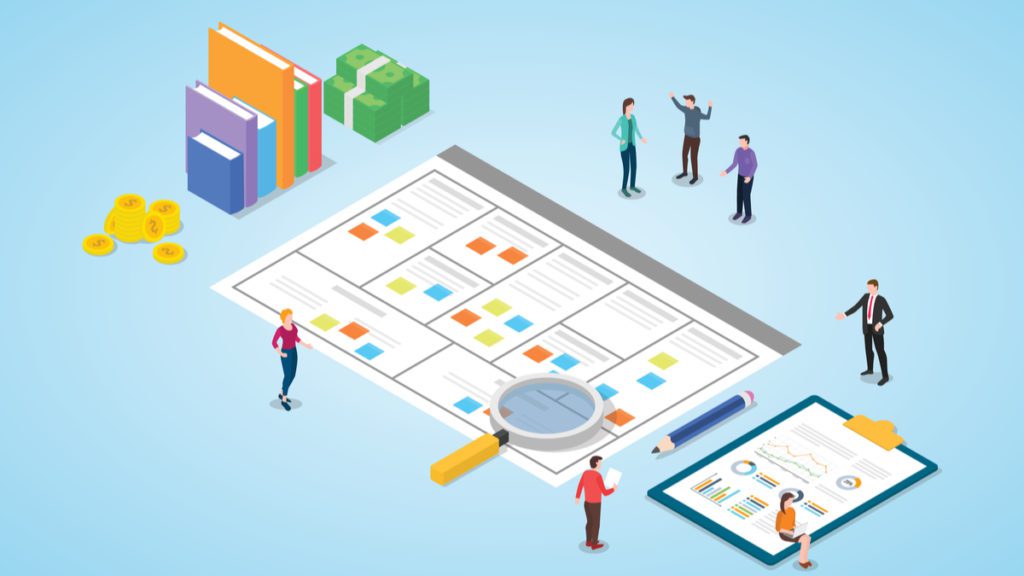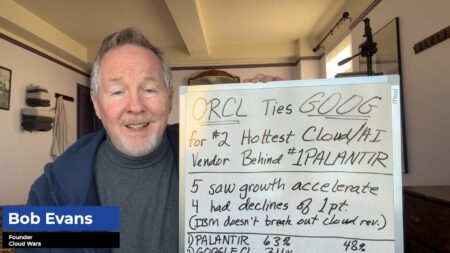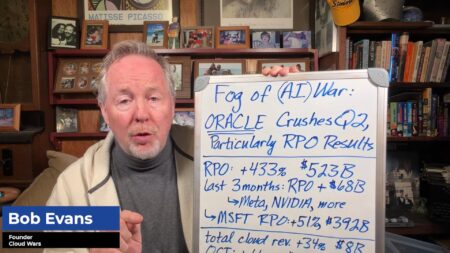In early 2020, who among us could have predicted the level of change, risk, disruption, and uncertainty we’ve experienced over the last two years? I sure didn’t! I predicted a booming business climate plus accelerating IT innovation and cloud adoption. I got it partially right: firms were forced to innovate as never before. Additionally, firms were forced to move labor-intensive IT infrastructure into hyperscale data centers much faster than any of us had forecasted.
IT infrastructures were transformed, but business models were transformed even more: work-from-home, home delivery, content streaming, home fitness, and flight from city to suburb (and beyond) are a few examples. Now, Covid-19 is waning in much of the world, but we face crazy inflation, supply-chain and labor disruption, and war in Europe. It’s a crazy time!
It’s the Acceleration Economy, where moving decisively to exploit societal and technological changes pays outsized dividends. That exploitation is the essence of ‘Digital Transformation.’ I define Digital Transformation as “a CEO/BoD led reimagining of an organization’s culture, markets, products, customer experience, and employee experience that is driven—in part or entirely—by the promise or threat of technology.”
Let’s look at how these key business models can be transformed to win in the Acceleration Economy.
1. Culture
Culture is a combination of what an organization says it stands for and how it actually behaves. In my experience across organizations, the best way to understand culture is to listen to the stories ‘shared around the campfire’ via formal and informal channels—the accomplishments that get told and retold as well as the people who get singled out as heroes to be emulated (and those vilified as goats).
When I worked on Wall Street, heroes were those who made the most money and worked the longest hours, plus snatched more deals away from rivals. In IT, heroes “beat up vendors the most in every interaction.” At a firm in another industry, sales was the hero. IT was unimportant except when a salesperson got something special to ‘seal a deal.’
Regardless of an organization’s culture, it is vital that the organization “walks the talk” by consistently upholding its values. After two years of ‘Work From Home’ plus unprecedented turnover—where employees were often hired over Zoom and never met managers or co-workers in person—C-Suites need to:
- Re-examine the ‘official’ culture (the values emblazoned above the entrance to HQ)
- Understand the ‘de facto’ culture as seen by employees
- Continually reinforce cultural norms and expectations to employees, wherever they live and work
- Monitor for cultural transgressions and take appropriate actions when exceptions are detected
Face it: an ever-larger number of employees will be physically remote, without the acculturation that occurs around the coffeepot and at lunch. It’s vital to reimagine how you teach and reinforce culture to keep employees connected to the organization and what it stands for.
2. Products
Your ‘products’ are the things you sell. These days, the pressing product re-imaginations are responses to supply chain problems plus inflationary forces. If your products are stuck in a Chinese port, who cares how cool it is?
The obvious solution is onshore/nearshore manufacturing, except that you went offshore for labor or material cost savings. Inflation plus higher onshore/nearshore costs plus labor shortages deliver a triple-whammy!
Many firms are accelerating factory and supply chain innovation and automation. Increasing investment in robotic assembly, additive manufacturing, ‘mega casting,’ advanced materials, and more improve competitive capabilities.
Software that allows real-time supply-chain visibility also helps firms cope with disruption and complexity. For instance, this can include software such as ‘Industry Cloud ERP/CRM’ that comes pre-customized for specific industries and sophisticated Warehouse and Transportation Management Systems (WMS/TMS).
If you’re betting on cost arbitrage and long lead times to compete, you’ll lose to more nimble firms with better technology.
3. Markets
Your ‘markets’ are how and where you sell your products. Given the amount of disruption the world has lately faced getting goods from raw materials into buyers’ hands, this part of your business model is changing fast.
The ‘home delivery’ boom that started with lockdowns IS NOT going away. WFH will NOT become ‘Return to Office’ any time soon. Workers have the upper hand. Firms learned that work was completed even when workers were elsewhere for two years.
If you’re a firm that sells through multiple channels—stores and direct, for example—be sure to merge the supply chains and ordering systems so customers get a seamless experience wherever and however they interact.
Stop hoping for the return to dense downtown offices and the attendant packaging and delivery scale economies. Instead, focus on getting smaller quantities quickly into the hands of suburban and exurban workers. In addition, consider how subscription models provide set-and-forget convenience to busy home workers (who don’t have a ‘facilities’ team supporting them) while boosting your recurring revenue[1].
If your products are complex to demonstrate or challenging for prospects to visualize, invest in Metaverse technology. Augmented reality (AR) and virtual reality (VR) tools can ‘bring the showroom to the prospect.’ Today, adoption is low; but the $billions invested by tech powerhouses will attract many users very quickly[2].
If you’re serious about building a game-changing WFA experience, also plan for final-mile technology, like automated vehicles and drones connected to your Warehouse and Transportation Management Systems. Reimagining your organization to handle complex, dynamic supply chains—inbound and outbound—is essential to compete in a disrupted world.
4. Customer Experience & Employee Experience
I’m treating these elements of business models as one because—like it or not, and some executives hate it—employees are your most important customers. A couple of principles should guide ‘experience design’—but often don’t. Reimagine this element of your business by increasing adherence to the principles rather than leaving experiences to chance.
First, align the experience with the culture (employees) and the ‘Brand Promise.’ Does your culture/brand stress engineering excellence, ease of interaction, efficiency, or something else?
Whatever defines your firm, does the experience reflect it? If you’re easy to use, are the wait times short (for instance, what do you expect from Nordstroms vs. Sam’s Club)? If you’re a full-geek culture, are your support folks highly trained and equipped with the best tools (are you willing to wait longer for an Apple ‘Genius’ than the phone department clerk at Wal-Mart)?
The same goes for employees: if your culture stresses trust and empowerment, don’t make employees bring a copy of a death certificate to claim bereavement leave.
Second, mitigate unnecessary process and system ‘friction’ in your interactions. Connect your in-store ordering and fulfillment systems to your online shopping carts. This way, an item in a cart can be paid for and picked up at a store or an online order returned at a store.
Also, don’t force employees or customers to sign in to multiple systems to interact with you! This is so obvious—while also being critical to proper security—that it shouldn’t need highlighting. But after working with thousands of systems over a long career, I assure you it’s going on right now in most of your organizations!
In today’s Acceleration Economy, you must reimagine and reimplement your business model to remain relevant. Get going or get left in the dust!
I get coffee, toner, and air filters all delivered. The toner is delivered based on my use. When will the filter folks use IoT to send me a filter when mine get dirty? And what a coincidence…as I was writing this, a local smoothie chain emailed me an invitation to have a customized smoothie delivered to my house every day! ↑
Subscribe to MyMetaverseMinute.com to keep up with this exciting technology! ↑
Want more tech insights for the top execs? Visit the Leadership channel:










